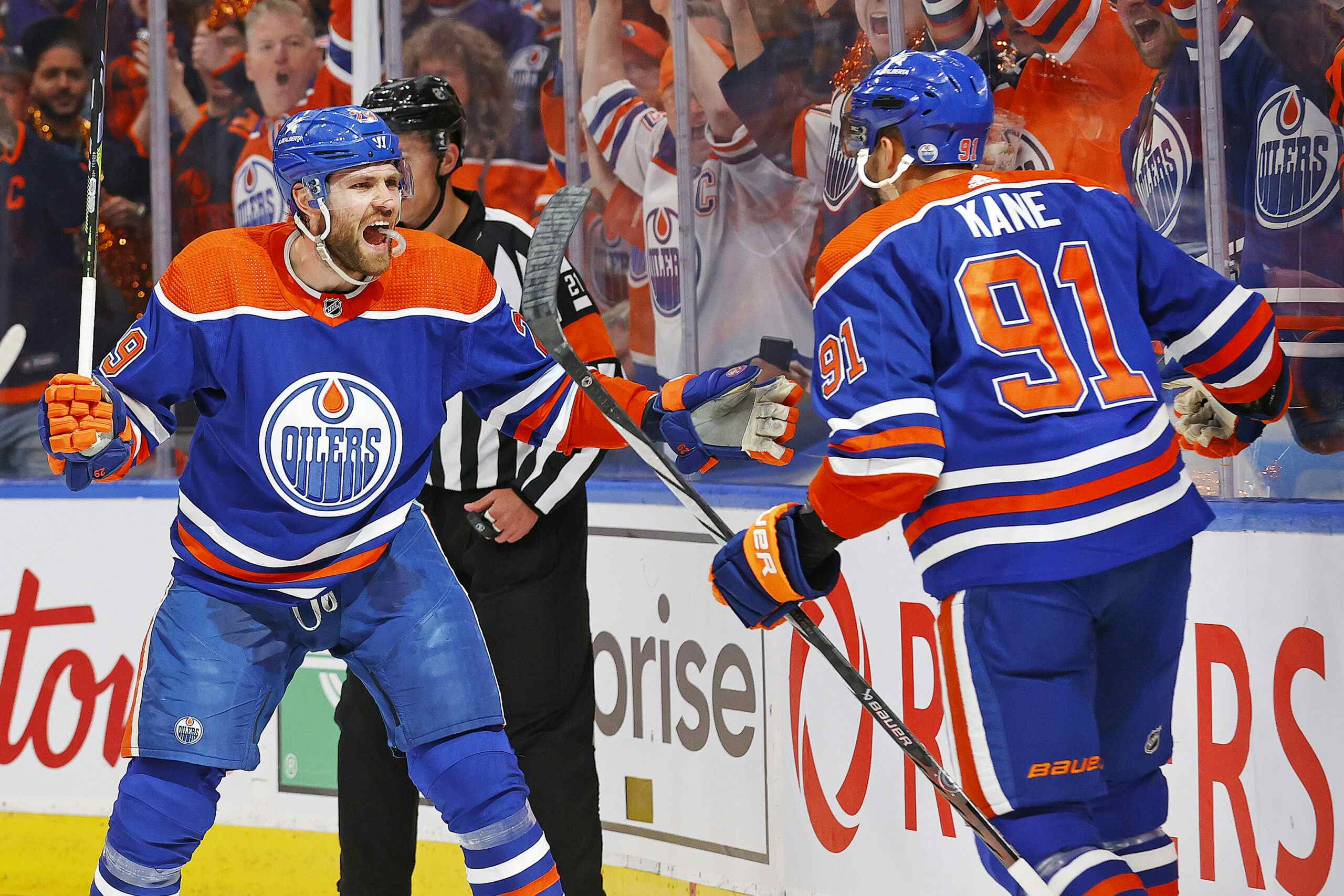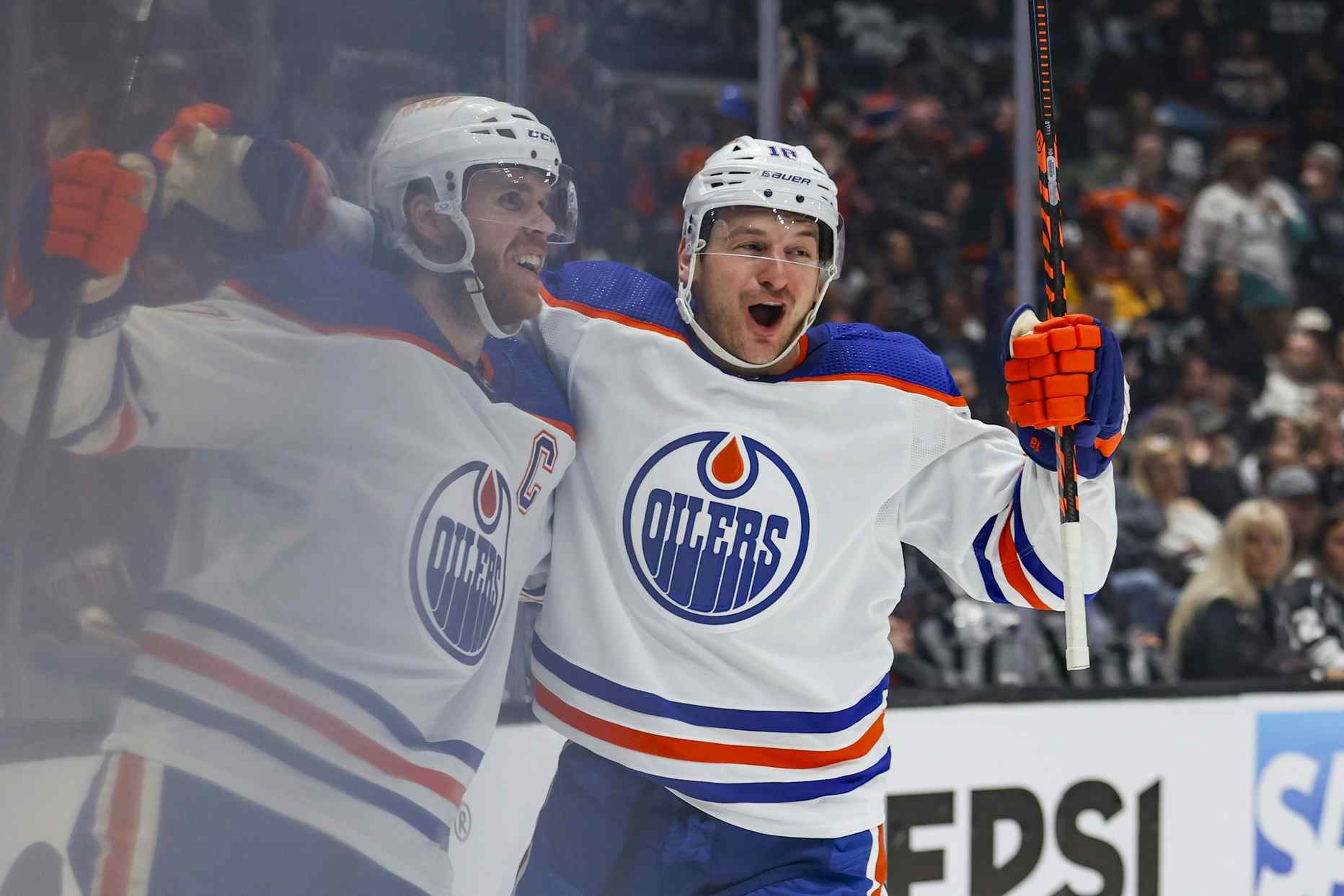By The Numbers: The Touch, The Power

Hello Nation,
So this is going to show a little bit of age here, but how many of you are familiar with the brilliantly-written 80s song “The Touch” from The Transformers: The Movie?
No? Yes? Either way, this is the song:
Failed to load video.
A couple of immediate questions before we get started: Is this the most 80s song ever recorded? How much was Stan Bush paid to cut this track? Who the hell is Stan Bush? Why is there a frickin Transformers video leading off an Oilersnation article? THIS HAS NOTHING TO DO WITH THE OILERS!!
Oh, but doesn’t it? Take a look at these lyrics, Citizens:
You got the touch
You got the power
When all hell’s breakin loose
You’ll be riding the eye of the storm
You got the heart
You got the motion
You know that when things get too tough
You got the touch
You got the power
When all hell’s breakin loose
You’ll be riding the eye of the storm
You got the heart
You got the motion
You know that when things get too tough
You got the touch
There are also some lines about knowing the streets, breaking the rules, taking the heat, being nobody’s fool, being at one’s best when the going gets rough, and being put to the test but it never being enough. What I’m saying here is that this magnificent piece of musical nostalgia is more representative of the @Edmonton Oilers’ season thus far than one may think.
Allow me to show you.
Also, we’re looking at some underlying numbers here, where there’s more than meets the eye... Eh? EH??
Anyway…
The Touch
– Shots
Shots on goal have been an issue for the Oilers so far this season as they rank second-last in the NHL in shots/game with an average of only 28.9, which trails only the @New York Islanders.
But is this actually an issue?
Well, they still have a winning record in games when they’ve been out-shot by opponents, 8-6-1. Not ideal, but still a winning record; their record when outshooting opponents is a very predictable 7-2-2.
But rather than focusing on the volume of shots, it’s worth considering the quality of them. Though the High Danger Corsi metric doesn’t necessarily correlate directly to shots on goal– as it registers blocks, misses, goals, shots and posts– it can help contextualize a team’s shot quality. The Oilers rank 5th in HDCF with 302 opportunities, and only 16th in HDCF% with 50.59, but they are very good when comes to converting in the High Danger area, ranking 7th in HDGF% at 55.36.*
*a big reason, if not the biggest reason, for the success in the High Danger area is @Mikko Koskinen, who ranks third in 5v5 HDSV% (amongst goaltenders with minimum 450 TOI) with a .885 (anything close to .900 is very very good) and third in High Danger Goals Saved Above Average with 5.89. That means he’s “saving” almost six more goals in the high danger area than a goaltender facing the same amount of action as he is.
But what exactly does the Oilers’ attack look like visually? This heat map gives you an idea.
(Average shot on goal length is 5th in the NHL at 37.8′)

The Oilers’ attack is quite unbalanced. The red spots are where the majority of their shots are coming from, with the deeper the red, the more frequent a shot is unloaded from that area. The areas of preference for the Oilers are in front of the net (which is good!) but other than that, really only from the left-hand side of the blueline, no doubt largely contributed to by @Oscar Klefbom.
For some further context, the imbalance of the attack becomes pretty stark when you compare to, say, the @Carolina Hurricanes:

Or even the @Montreal Canadiens:

There’s an argument to be made that “if it ain’t broke, don’t fix it.” But what also needs to be considered is that if coaches aren’t proactive in improving and diversifying upon something that is working, then you get figured out and shut down. This is often what happens to a team that goes on a crazy hot streak then suddenly hits the skids (or, if you’re an NFL fan see: Kelly, Chip and McVay, Sean). The best teams realize these things before they start to sink them and seek to innovate them. The Oilers need to get a little more differentiation out of their attack.
It’s not about how many shots you’re taking, it’s about where you’re putting those shots; it’s all about touch, baby.
The Power…
…play
Special Teams. I like to tweet about it pretty much every time either the Oilers’ powerplay or penalty kill units hit the ice. Last season, the Oilers’ PK was bad. Like, really bad. Like, atrociously, pathetically, embarrassingly bad. This is where the whole “being the best when the going gets tough” thing comes in because the penalty kill has been outstanding this year.
But let’s focus on the powerplay. There’s a lot of frustration amongst fans about the lack of penalties that seem to go uncalled on the Oilers, so let’s see how that compares to other teams in the top ten powerplays:
| Powerplay Rank | GP | PPG | Penalties Drawn/60 | PP Opportunities | PP Goal-Scorers |
| 1. EDM (32.0%) | 27 | 24 | 2.67 (29th) | 75 (23rd) | 6 |
| 2. BOS (32.0%) | 25 | 24 | 3.46 (5th) | 75 (24th) | 7 |
| 3. TBL (31.9%) | 22 | 22 | 3.38 (8th) | 69 (29th) | 11 |
| 4. VAN (26.7%) | 26 | 28 | 3.90 (2nd) | 105 (1st) | 9 |
| 5. STL (24.4%) | 26 | 20 | 2.86 (23rd) | 82 (14th) | 7 |
| 6. FLA (23.7%) | 25 | 18 | 3.01 (17th) | 76 (21st) | 7 |
| 7. WSH (23.2%) | 26 | 19 | 3.30 (11th) | 82 (13th) | 8 |
| 8. CAR (21.8%) | 25 | 17 | 3.28 (12th) | 78 (18th) | 9 |
| 9. VGK (21.2%) | 27 | 18 | 2.81 (25th) | 85 (8th) | 8 |
| 10. NYR (20.7%) | 23 | 17 | 3.41 (7th) | 82 (12th) | 8 |
So, one thing that will do absolutely nothing to dispel the conspiracy theories is the frequency of penalties called in the Oilers’ favour. Only the @Dallas Stars (2.56), and the Islanders (2.26) have drawn minor penalties at a lower rate.
How big of a factor does this play? Well, the only team that finished the 2018-19 season with a top five powerplay and was outside of the top ten with minor penalties drawn/60 was the @Pittsburgh Penguins, who finished 22nd with 2.84. Other than them, the @Tampa Bay Lightning, @Florida Panthers, and @Boston Bruins all finished in the top five in both PP% and minor penalties drawn/60, and the team that drew the most frequent minors, the @Colorado Avalanche, finished with the seventh-best powerplay.
Yes, this is comparing an entire season’s worth of stats from 2018-19 to just over a quarter of this season, but what it tells us is that so far this season, the Oilers are making the most with the least right now. They have the power.
And here are just some other interesting things to consider as the team moves through Q2 of the 2019-20 NHL season:
The Heart
– Leads
How the Oilers fare when playing with or without a lead:
When Leading After the First Period: 9-1-1 (shorty fire burnin’ on the dance floor)
When Trailing After the First Period: 2-4-0
When Leading After the Second Period: 10-0-1
When Trailing After the Second Period: 2-7-1 (for curiosity’s sake, the best “third period” teams, at least when playing from behind, are the @Winnipeg Jets and @Florida Panthers who both have 5 wins when trailing after two).
That one OT loss when leading after the first period and second period is the same game, that blown 4-2 lead to the Stars on November 16th and the single regulation loss when leading after the first period was this past game to the @Colorado Avalanche.
The Motion
– Period Goal Distribution
The Oilers are 7th in the NHL in total Goals For with 84, they’re 9th in 5v5 GF with 55, and tied for 2nd (with the @Boston Bruins) in PPG with 24.
But as far as goals by period are concerned, it’s an even distribution. Startlingly even.
| First Period Goals For | Second Period Goals For | Third Period Goals For | (OT Goals For) |
| 28 | 27 | 27 | 2 |
If anything, we’re a “second period team,” allowing the fewest goals against (23) during the middle frame– GA in the first period are 26 and 25 in the third; they rank tied for 16th in GA (w/ the @Washington Capitals) with 76.
They’re 10th in goal-differential at +9.
I hope this article has left you with some inspiration.
Follow me on Twitter @GoodNicklaus and let me know what you thought!
THE BLACKOUT COLLECTION

We’ve upgraded every aspect of this year’s gear and we cannot wait for you guys to check it out! The 2019 Blackout collection is now available only at NationGear.ca.
Traditional and /60 stats courtesy of nhl.com | Advanced counts courtesy of naturalstattrick.com | Heat maps courtesy of hockeyviz.com
Recent articles from Nicklaus Good





